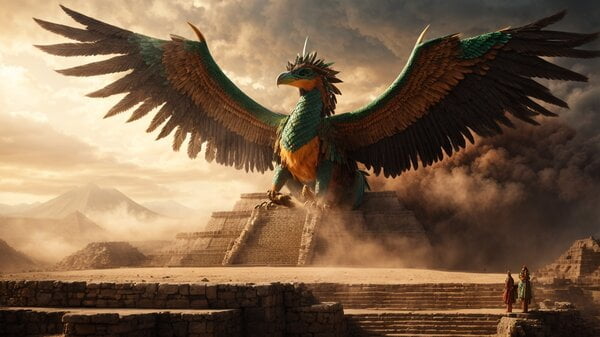Aztec mythology is a fascinating and complex part of Mesoamerica’s cultural heritage. Over the centuries, the Aztecs developed a rich religious tradition that profoundly influenced their daily life, art and worldview. Aztec mythology was populated by a diverse panoply of gods and goddesses, each with their own personality, domain and role in Aztec cosmology.
One of the most important gods was Huitzilopochtli, the god of war and patron of the Aztecs. He was depicted as an armed warrior with a feathered serpent on his head and a mirrored shield, and his worship was central to Aztec society, especially in times of conflict.
Quetzalcoatl, the feathered serpent, was another god of great relevance. He was the god of wisdom, culture and fertility. The Aztecs believed that Quetzalcoatl created mankind and provided it with corn, a fundamental food in their diet.
Tlaloc, the god of rain, was essential for agriculture and the survival of the Aztec civilization. The rituals of worship to Tlaloc were intended to ensure the arrival of the rain needed for crops.
Tezcatlipoca was the god of destiny and duality. He was represented with a smoking mirror and was related to night and magic. Tezcatlipoca was believed to have a fundamental role in the creation and balance of the world.
The Aztecs had a cyclical view of time and believed in the existence of multiple eras and previous worlds. According to their mythology, the present world, known as the Fifth Sun, was created after a series of cataclysms that destroyed previous worlds. The creation of the world was the result of a divine sacrifice in which the gods offered their blood and life to give birth to humanity.
One of the most controversial facets of Aztec mythology was the practice of human sacrifice. The Aztecs believed that the gods needed to be fed with human blood to maintain balance in the world and ensure their survival. This belief led to the performance of religious ceremonies involving the offering of prisoners of war and captives as sacrifices. Although this practice is often viewed with horror today, it was a central part of Aztec religion and worldview.



